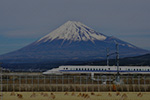Kii PeninsulaOpening the Door to Your Japan
- TOP
- Sacred and Vibrant
- Location
- Suggested Itineraries
- Useful Tickets
Sacred and Vibrant
A spirited region with the mysterious Shugendo ascetic at its heart.
A rich history dating back over a millennia, the area also is home to an array of tourism resources and exciting hands-on experiences unique to the Kii Peninsula.
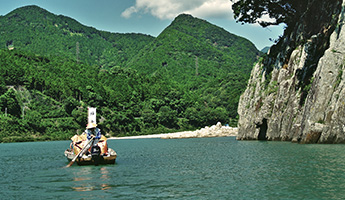
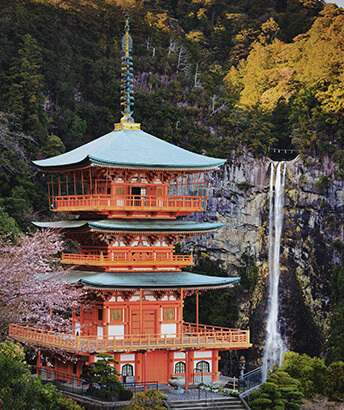
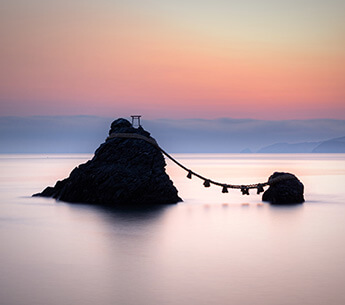

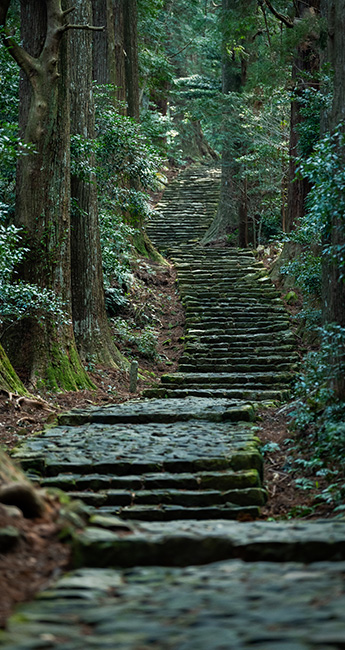
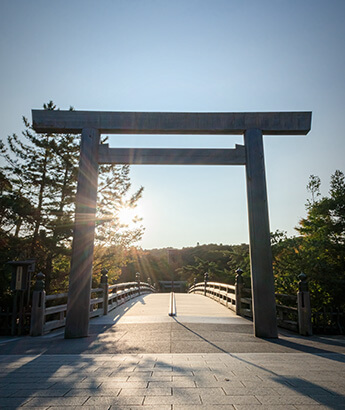
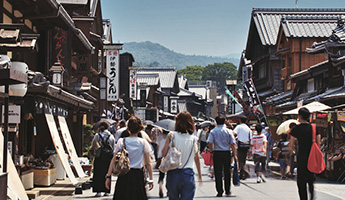
Location
Jutting out of the main island of Honshu, the Kii Peninsula is a mountainous, remote area reknowned for its unique religion, dramatic landscape, and mouthwatering food. With the legendary Kumano Kodo hiking route cutting across the area, the Kii region satisfies those looking for adventure and those looking to deepen their spirituality.
Suggested Itineraries
The Kii Peninsula offers a variety of experiences, from hands-on cultural participation to active hikes and biking. The rich history of the region lends itself well to meeting the needs of any visitor. See below for a couple of recommended itineraries.
- #01
Spiritual Journey - #02
Active Japan
Take a journey into the spiritual heartland of Japan, following in the footsteps of pilgrims who have been treading the mountain trails of the Kumano Kodo pilgrimage route for centuries. Using the Ise-Kumano-Wakayama Area Tourist Pass to make the most of your time in the area, experience for yourself the ethereal power of ancient Shinto shrines as you explore the Kii peninsula, replete with abundant forests and towering mountain peaks. After walking the highlight sections of the Kumano Kodo route, which is twinned with another UNESCO designated pilgrimage route, the Camino de Santiago in Europe, you will complete your journey with a visit to Ise, the home of the most revered shrine in all of Japan.
DAY 1
Take the Tokaido Shinkansen and
JR Limited Express "Kuroshio" to the Kii Peninsula
-

Tokaido Shinkansen
 Tokyo Sta.▶▶Shin-Osaka Sta.
Tokyo Sta.▶▶Shin-Osaka Sta.
2.5 hours by Tokaido Shinkansen
-
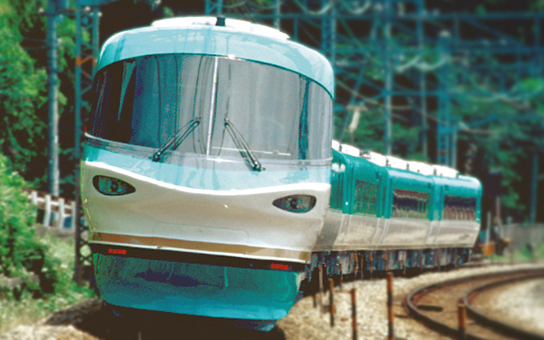
Limited Express Kuroshio
 Shin-Osaka Sta.▶▶Kii-Tanabe Sta.
Shin-Osaka Sta.▶▶Kii-Tanabe Sta.
2.5 hours by Train and transfer to Ryujin bus
-

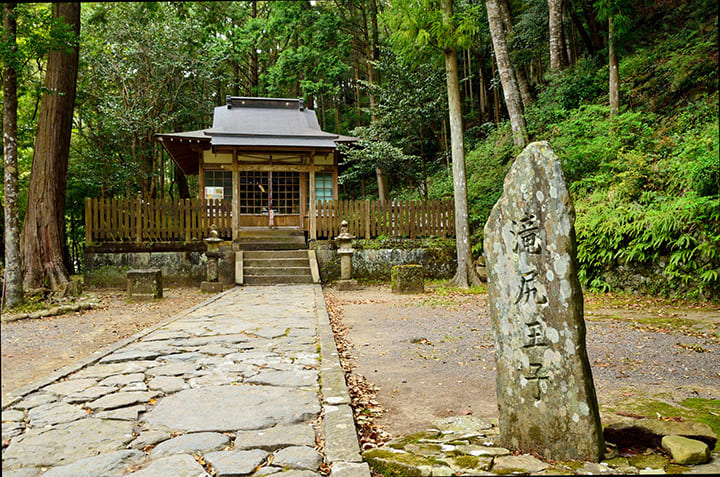
 Kumano Kodo Hiking
Kumano Kodo Hiking
Kumano Kodo Nakahechi routeTakijiri-oji Shrine ~ Kirinosato
Your bus will drop you right at the entrance to the Takijiri-oji Shrine, handily located just across the road from the Kumano Kodo Information Center. This marks the start point of your hike along the Kumano Kodo Nakahechi pilgrim's trail. The Nakahechi is the core route of the Kumano Kodo trail network and connects the western part of the Kii peninsula with the three Kumano Grand Shrines, towards which you will be winding your way along forested trails. Before setting out, be sure to pay a visit to Takijiri-oji itself. Oji are subsidiary shrines along the Kumano Kodo route, and Takajiri is one of the 'Gotai-oji' - the five most important Oji shrines. Take a few minutes to relax and enjoy the sound of the Tonda river flowing past the shrine as you work up the courage to set off on your hike!
-
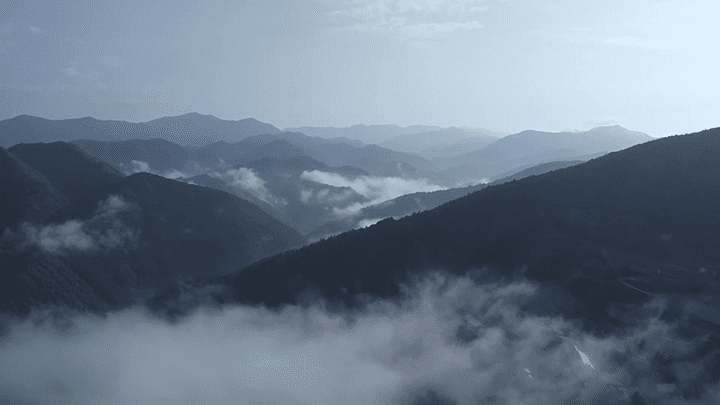
 Onsen & Ryokan Inn
Onsen & Ryokan Inn
Overnight at the Kirinosato Takahara Organic Hotel
After approximately 1 hour of traversing ancient stone staircases and forest trails, you will reach your final destination for today, the Kirinosato Takahara Organic Hotel. Perched on a hillside overlooking the surrounding mountains, you can put your feet up after your hike and enjoy watching the glorious sunset from the outdoor terrace seating before enjoying a delicious dinner of home-cooked fusion cuisine made using locally grown organic produce. It's worth setting your alarm early tomorrow morning, if the stars align and the conditions are right, you may find yourself looking out at a landscape enveloped by a sea of clouds. Even if the stars don't align, you'll find yourself setting out on cloud nine after a healthy organic breakfast which will set you well on your way!
DAY 2
-
 1.5 hours by bus and on foot
1.5 hours by bus and on foot
-

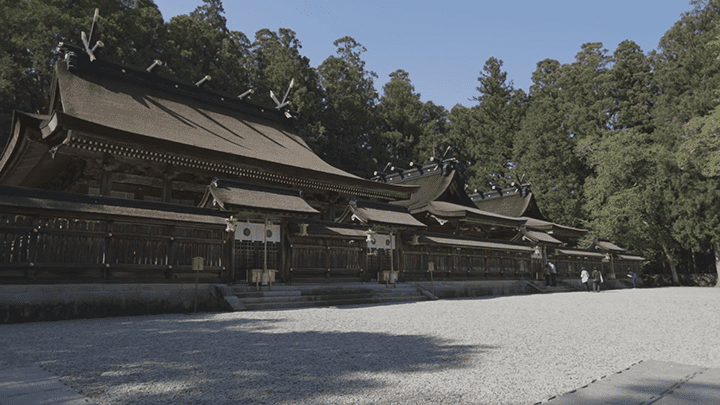
 Kumano Kodo Hiking
Kumano Kodo Hiking
Kumano Kodo Nakahechi routeTsugizakura-oji ~ Kumano Hongu Taisha Grand Shrine
Your hike today is on clearly signposted unpaved forest trails, taking you east through the mountains toward Kumano Hongu Taisha Grand Shrine. The trail begins at Tsugizakura-oji, a Shinto shrine situated amidst towering Japanese cedar trees, before winding its way up and over mountain passes, such as the Waraji-toge pass, so named after the traditional waraji straw sandals worn by pilgrims - by this stage in the journey it was necessary to change into a new pair! With your shoelaces re-tightened and a short while later, you'll arrive at Jagata Jizo, a stone statue of the Buddhist guardian of travelers - a popular and tranquil spot to stop for a picnic lunch! During the afternoon, look out for the moss-covered statues of foxes, standing watch outside small shrines dedicated to Inari, the god of rice cultivation.
-

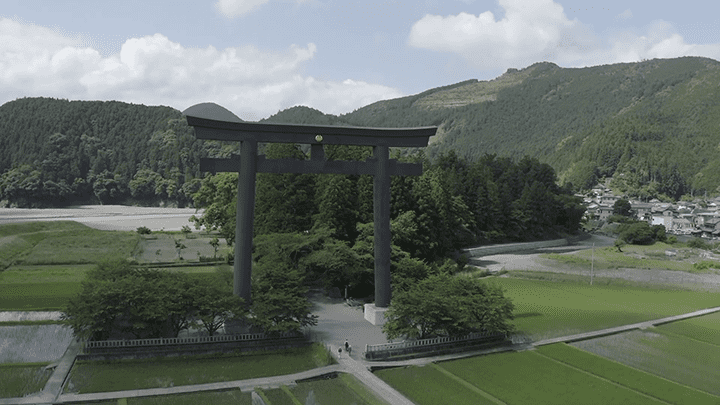
 Shrine
Shrine
Kumano Hongu Taisha Grand Shrine, Oyunohara Gate
At the end of your hike today, you'll reach the Kumano Hongu Shrine, the spiritual heart of the region, where the branch arteries of the various ancient Kumano trails all converge. Since 2015 the Kumano Kodo pilgrimage has been part of the Dual Pilgrim Project along with another UNESCO World Heritage designated pilgrimage route, the Camino de Santiago. Before continuing your journey, be sure to visit Oyunohara, a few minutes' walk from the main Hongu Shrine. Oyunohara was the original site of the Hongu Shrine buildings before they were moved in the late 19th century due to flooding. The serene grass-carpeted interior is set apart from the mundane world by a huge torii shrine gate, which towers over the surrounding rice fields.
-


 Onsen
Onsen
Overnight at Hongu Onsen-kyo
This evening you will spend the night at one of the three nearby hot-spring villages that make up the Hongu Onsen-kyo; consisting of Yunomine Onsen, Kawayu Onsen and Watarase Onsen. After today's long hike, your thighs will thank you for a dip in these healing hot spring waters! At Yunomine Onsen, you can try bathing in a rare example of a UNESCO World Heritage designated bath - the Tsubo-yu is contained within a wooden hut perched in the middle of the river that runs through this quaint village. Kawayu Onsen means 'river hot spring' due to the fact that delightfully warm water bubbles up from the river banks in this small town. During the winter months a huge bath is created by piling up rocks in the river to form an enclosure that is said to accommodate 1000 bathers! At Watarase Onsen you can enjoy soothing your muscles while gazing up at the stars and lounging in the largest outdoor hot-spring bath in western Japan.
DAY 3
-

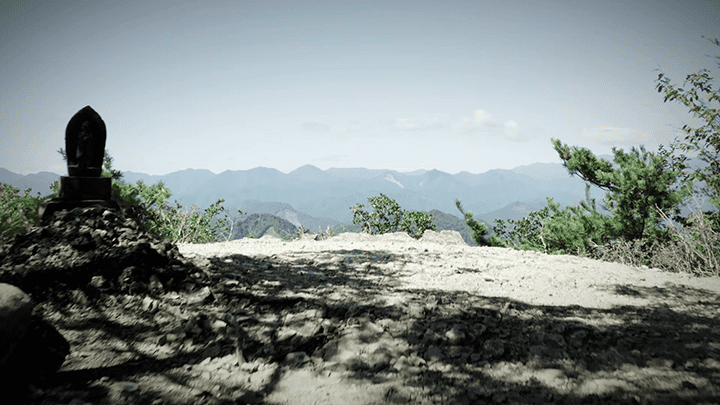
 Kumano Kodo Hiking
Kumano Kodo Hiking
Kumanokodo Hyakkengura
From Ukegawa you will begin your climb along the Kogumotori-goe route. The beginning of the trail will take you through the backstreets of a quiet residential area before rising steeply up through forests of cedar and cypress trees with their woody scent lingering heavily in the air around you. After around 5 kilometers you're sure to gasp in awe as you reach your goal, Hyakken-gura, one of the best lookout points that can be found among all of the Kumano pilgrimage trails. From here you can enjoy a breathtaking panoramic view across the entire Kumano mountain range. Take your time to bask in this glorious vista before heading back down to Ukegawa - it's much easier on the way down!
-
 50 minutes by bus
50 minutes by bus
-


 Shrine
Shrine
Kumano Hayatama Taisha Grand Shrine
Just a stone's throw from the bus stop is the Kumano Hayatama Taisha Grand Shrine, another member of the illustrious three Kumano Grand Shrines. Lying adjacent to the banks of the Kumano River, the shrine's eminent history harkens back to at least the 12th century and possibly earlier. Although located within the urban environment of Shingu city, the grounds of the Hayatama Shrine feel like another world, a tranquil oasis removed from the hustle and bustle of everyday life. Be sure to look out for ornamental banners and other shrine ornaments featuring the yatagarasu, a three-legged crow believed to be a sacred messenger of the three great Kumano shrines.
-

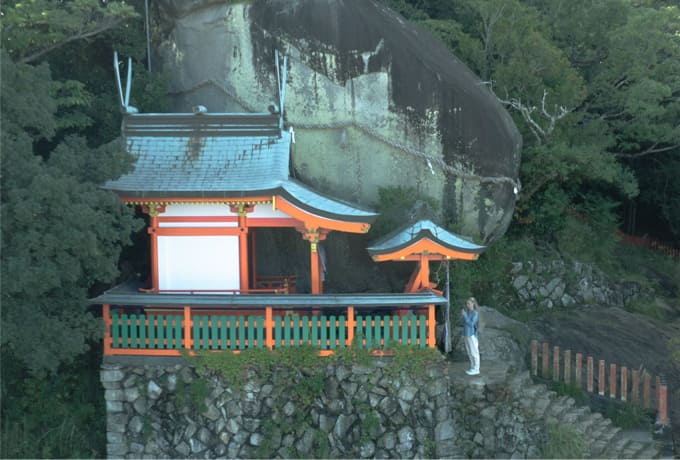
 Shrine
Shrine
Kamikura-jinja Shrine
A short walk from Kumano Hayatama Taisha Grand Shrine will bring you to an imposing stone staircase framed by a vermillion torii shrine gate. The ascent is so steep that you may find yourself almost crawling up using your hands as well as your feet! After 15 minutes of scrambling, you will be rewarded with a view of the Kamikura-jinja Shrine, built beneath a huge boulder believed to be the spot at which the Kumano deities revered within the three Grand Shrines first descended to earth, and therefore a spot of special spiritual significance. The shrine building wedged underneath the gigantic boulder, with the city of Shingu and the sunlight shimmering off the Pacific Ocean in the background make this a fantastic photo spot!
-
 Hotel
Hotel
Overnight in Shingu
After visiting its two most sacred monuments, this evening you will stay the night in the small city of Shingu, which is easily navigable on foot.
DAY 4
-
 20 minutes by train
20 minutes by train
-

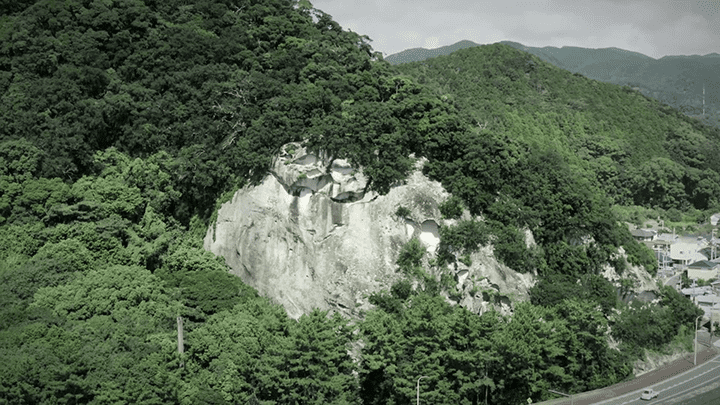
 Shrine
Shrine
Hana no Iwaya Shrine
Kumano city's beachfront is just a short stroll from the station. Walking along the beach you can breathe in the fresh salty air during a 20 minute walk to the Hana no Iwaya Shrine, directly facing the ocean. On your way, keep an eye out for the Shishiiwa, a large rock that has been battered by the wind and waves over the centuries to the extent that it now bears an uncanny resemblance to a shishi, mythical lion-dog creatures that act as guardians at Shinto shrines. Perhaps this shishi is guarding the Hana no Iwaya Shrine close to which it stands! Many claim that this shrine is the oldest in Japan, and it's even mentioned in the Nihon Shoki, one of the oldest chronicles of Japan compiled in the 6th century. Take a few minutes here to just sit back, close your eyes, and let the aura of centuries of veneration wash over you as the sound of waves lapping the shore behind you soothes your mind.
-

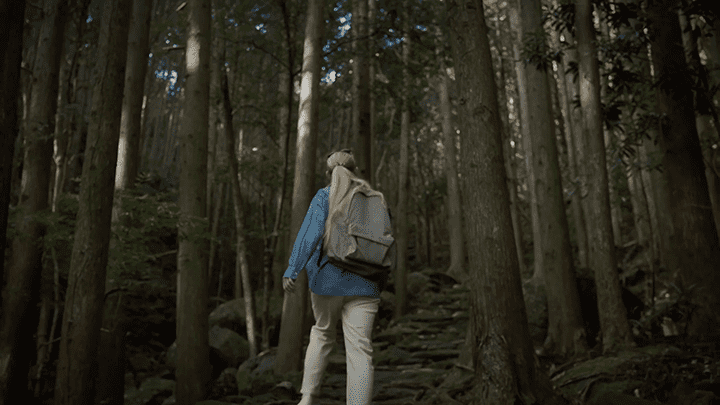
 Kumano Kodo Hiking
Kumano Kodo Hiking
Kumano Kodo IsejiMagose Pass
This afternoon's hike sees you travelling along a portion of the Iseji route of the Kumano Kodo, a section of the network that became particularly famous from the 17th century onwards, when pilgrimage to the Ise Shrines boomed in popularity. Many pilgrims would initially visit the Ise shrines and after paying their respects there, continue on to the three Grand Shrines of Kumano along the Iseji trail. Today you'll be traversing one of the most beautifully preserved sections of this trail, up and over the Magose Pass. The trailhead begins a short walk from Aiga Station, with cobblestone paths and ancient stone staircases well worn by the footsteps of countess pilgrims passing through towering forests of Japanese cypress trees. The trail ends at the Owase Shrine, just a short walk from Owase Station from where you will continue your journey.
-
 2 hours by train
2 hours by train
DAY 5
-

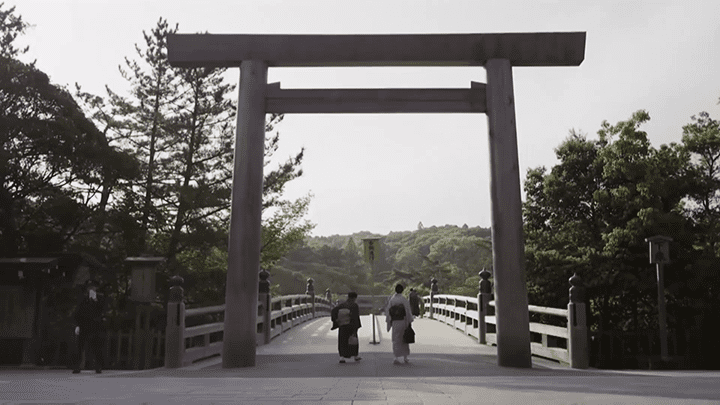
 Shrine
Shrine
Ise Jingu
Considered by most to be Japan's foremost center for Shinto worship, the Inner compound of Ise Jingu enshrines Amaterasu-Omikami, the great sun goddess, believed to be the mythical ancestress of the Japanese Imperial Family. The minimalist simplicity of the shrine creates a sublime sense of awe as visitors make their way along the wide boulevards leading to the main sanctuary. Unlike other Shinto shrines in Japan, where worshippers purify themselves before praying at specially constructed stone basins, as the Ise Inner Shrine devotees also have the chance to purify their hands by washing them at an area by the sacred Isuzugawa River which runs past the Uji Bridge at the entrance to the complex. A unique feature of the Ise Shrine's inner sanctuary is that the buildings are completely reconstructed every 20 years in an area directly adjacent to the previous buildings. The sense of mystery that you feel when visiting Ise Jingu is compounded by the fact that it's not possible to enter the inner sanctuary itself; visitors perform their supplications from a fenced area at the entrance to the inner sanctuary, with the shrine buildings themselves only just visible above the surrounding walls and trees. Ise Jingu is a great lesson in how showing just a tantalizing glimpse of something can create a more powerful impression than a full-on view!
-
 30 minutes by bus
30 minutes by bus
-
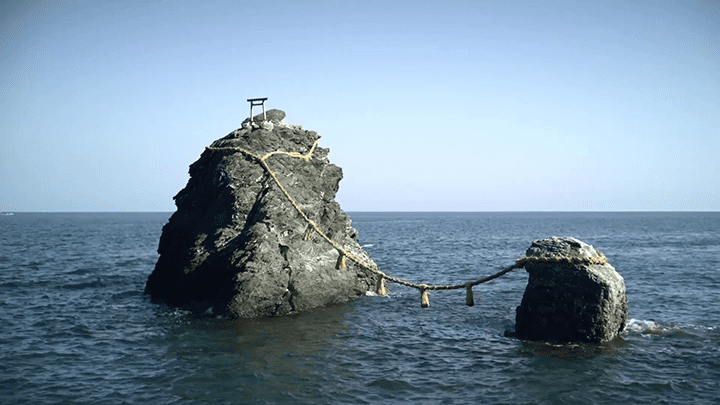
 Shrine
Shrine
Meotoiwa (the Wedded Rocks)
Sitting steadfastly in the ocean, just off the coast where the Futami Okitama Jinja is perched above the gently lapping waves, sit the Meotoiwa, or 'wedded rocks' - two rocks, one large and one small, joined in happy union by a sacred braided rope with an impressive weight of 40kg! The two rocks are believed to represent the sacred union of Izanagi and Izanami, a divine husband and wife team and parents to the sun goddess enshrined in the nearby Ise Jingu, jointly credited as the deities responsible for the creation of the Japanese archipelago. Given the conjoined rocks' association with sacred coupling, the shrine is a popular place for couples to visit together and pray to strengthen their ties of love. The romantic setting looking out to the ocean, where even distant Mt Fuji can be glimpsed on the horizon on very clear days, certainly helps to achieve this goal!
-
 2 hours by train
2 hours by train
-

 Hotel
Hotel
Overnight at Nagoya Marriott Associa Hotel
After 5 days of hiking and exploring, what better way to round out your trip than to stay the night at the Marriott Associa Hotel, a luxury property directly connected to Nagoya Station. Arriving in the late afternoon, on checking in you can toast your success with a refreshing expertly crafted cocktail at the hotel's Estmare bar before enjoying a hearty and well-deserved feast for dinner at one of the hotel's six in-house restaurants; restaurant choices include French cuisine, Chinese dim sum, Japanese teppanyaki cooked right before your eyes, or buffet-style dining if you're feeling a calorie deficit after your 5 days of hiking! One thing's for sure, after soaking up the panoramic view of the bright lights of Nagoya from your room, you're sure to sleep well tonight. Have a lie in - you've earned it!
DAY 6
-
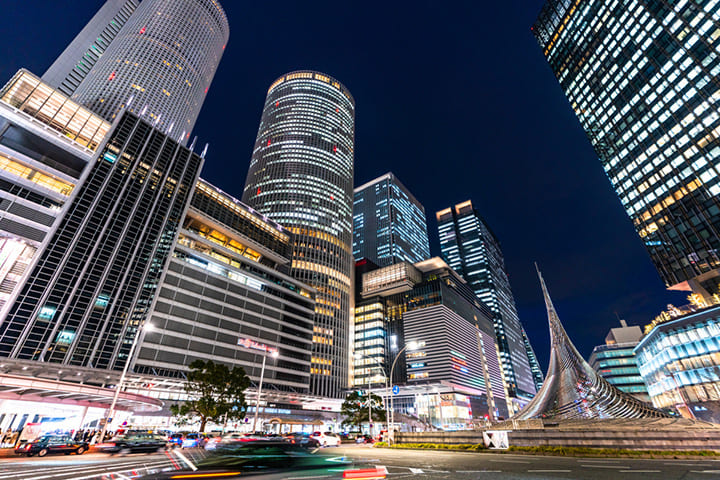
 Shinkansen
Shinkansen
Tokaido ShinkansenNagoya Sta. ~ Tokyo Sta.
From your hotel directly connected to Nagoya station, it's easy to hop on to the Tokaido Shinkansen for your journey back to Tokyo. Keep an eye out of the window as you whizz through Shizuoka prefecture - on clear days Mt Fuji is visible in all its glory along this route!
Spending some time away from Japan's big cities, on completing your journey along ancient pilgrimage trails, you're sure to feel that you've experienced the true spirit of Japan. Although you'll no doubt have worked up a sweat along the way, the fresh mountain air, delicious local foods and the spiritual energy of shrines reverberating with centuries of tradition are sure to leave you feeling refreshed and fulfilled.
Take a journey into the spiritual heartland of Japan, following in the footsteps of pilgrims who have been treading the mountain trails of the Kumano Kodo pilgrimage route for centuries. Using the Ise-Kumano-Wakayama Area Tourist Pass to make the most of your time in the area, experience for yourself the ethereal power of ancient Shinto shrines as you explore the Kii peninsula, replete with abundant forests, towering mountain peaks and panoramic ocean views. Exploring preserved townscapes, ancient forest trails and stunning natural scenery by both land and sea, you will complete your journey with a visit to Ise, the home of the most revered shrine in all of Japan.
DAY 0
-
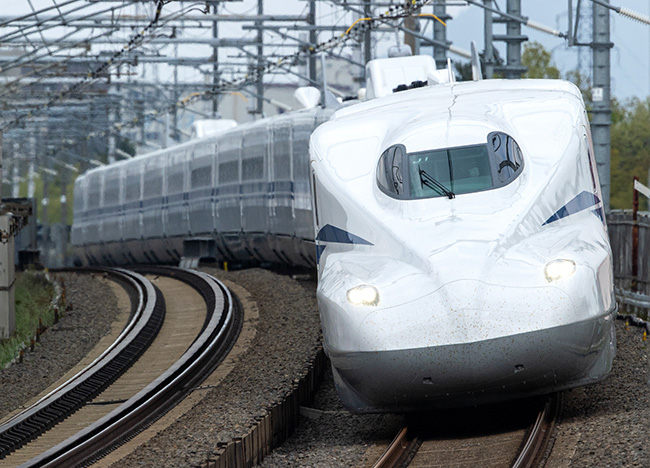
Tokaido Shinkansen
 Tokyo Sta.▶▶Shin-Osaka Sta.
Tokyo Sta.▶▶Shin-Osaka Sta.
2.5 hours by Tokaido Shinkansen
The Tokaido Shinkansen began operation in 1964 at the time of the previous Tokyo Olympic Games and traces the route of the Tokaido road, used in bygone days by feudal lords and their samurai retainers to make the journey between the Kanto and Kansai regions - a journey that used to take 2 weeks on foot. Thanks to the online reservation system available in English, you can make your reservation online and travel the same route in style from Tokyo to Osaka in just 2.5 hours!
-
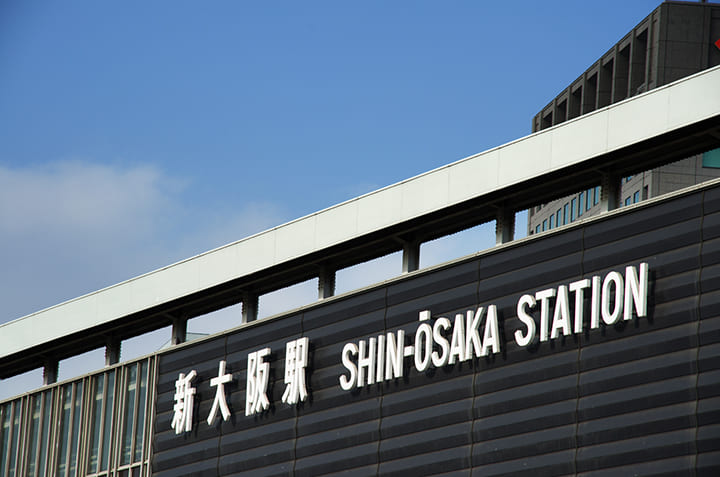
 Hotel
Hotel
Overnight in Shin-Osaka
After arriving in Osaka, you can enjoy spending the afternoon and evening exploring this vibrant and exciting city. Heading to the downtown Namba district, you can hop between street food stalls and local restaurants sampling the many delicacies that Osaka is famous for, such as fried takoyaki octopus dumplings, okonomiyaki savory pancakes, and kushikatsu - nuggets of delectable items breaded and deep-fried on skewers served with a special sauce! Having experienced the heartiness of the food and a warm welcome from the famously casual and down to earth locals, you will be staying in Shin-Osaka this evening; ideally placed for your onward journey tomorrow morning.
DAY 1
-
 1.5 hours by train
1.5 hours by train
-
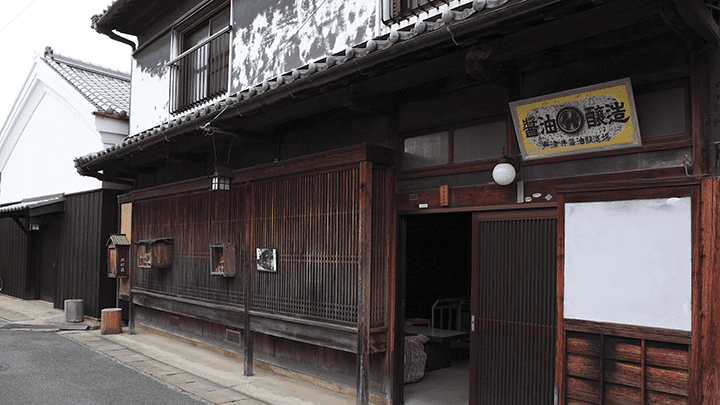
 Walking Tour
Walking Tour
Take a walk through the streets of Yuasa
Yuasa is a small town on the west coast of the Kii peninsula with a wonderfully preserved historic district that has yet to be discovered by the majority of visitors to Japan. In the past, the town functioned as a rest stop on the Kumano Kodo pilgrimage route, and it's from here that you will begin your own journey on this spiritual trail. In more recent times however, Yuasa is most famous for it's superlative contribution to Japan's culinary heritage, as the birthplace of soy sauce. Used as an ingredient, seasoning and condiment in myriad dishes, it's hard to imagine Japanese cuisine without this vital ingredient. During the booming Edo period, which began in the 17th century, there were over 90 soy sauce breweries operating in this prosperous town, and even today many of the buildings from the Edo and succeeding Meiji periods survive. Here you can spend a leisurely morning soaking up the atmosphere of these traditional streetscapes. Perhaps you might even want to sample a soy sauce ice cream!
-
 3.5 hours by train and bus
3.5 hours by train and bus
-

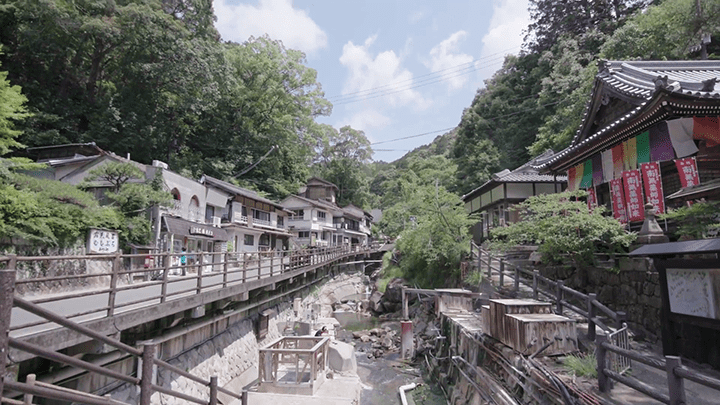
 Onsen
Onsen
Stay at Yunomine Onsen
This evening you will be staying in Yunomine Onsen, a quaint town nestled in a quiet valley surrounded by mountains, with a chance to purify yourself in the hot springs just as pilgrims walking the Kumano Kodo have been doing for centuries. You can even take a dip in a rare example of a UNESCO World Heritage designated bath - the Tsubo-yu is contained within a wooden hut perched in the middle of the river that runs through the village. If you're feeling peckish, you could even try an onsen tamago, eggs that have been cooked in the piping hot healing waters, before staying the night at one of the ryokan inns dotted around this intimate valley town.
DAY 2
-
 20 minutes by bus
20 minutes by bus
-

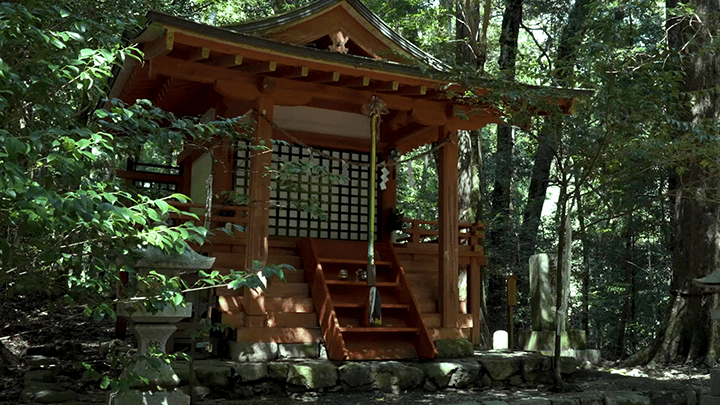
 Kumano Kodo Hiking
Kumano Kodo Hiking
Kumano Kodo Nakahechi routeHossinmon-oji ~ Kumano Hongu Taisha Grand Shrine
Your adventure today starts at the Hossinmon-oji itself. Oji are subsidiary shrines along the Kumano Kodo route, and Hossinmon is one of the 'Gotai Oji' - the five most important Oji shrines. With a name meaning 'gate of spiritual awakening', the shrine is considered to be the very outermost entrance to the Kumano Hongu Taisha Grand Shrine, towards which you hike from here. Your route will take you in the footsteps of pilgrims who have been traversing these secluded trails through thick forest and over mountain passes with breathtaking panoramic views for centuries. As you navigate these sacred paths, you will come across a number of other Oji shrines - great spots to take a break and recharge both physically and spiritually!
-


 Shrine
Shrine
Kumano Hongu Taisha Grand Shrine, Oyunohara Gate
At the end of your hike, you'll reach the Kumano Hongu Taisha Grand Shrine, the spiritual heart of the region, where the branch arteries of the various ancient Kumano trails all converge. Since 2015 the Kumano Kodo pilgrimage has been part of the Dual Pilgrim Project along with another UNESCO World Heritage designated pilgrimage route, the Camino de Santiago, also known as the Way of St James, which encompasses a similar network of spiritual trails that cross through France and Spain. Pilgrims who have traversed set sections of both routes can receive a special Dual Pilgrims certificate at Kumano Hongu Taisha Grand Shrine. Before continuing your journey, be sure to visit Oyunohara, a few minutes' walk from the main Hongu Shrine. Oyunohara Gate was the original site of the Hongu Shrine buildings before they were moved in the late 19th century due to flooding. The serene grass-carpeted interior is set apart from the mundane world by a huge torii shrine gate, which towers over the surrounding rice fields. The environs of the Hongu Shrine are also a great place to stop for lunch, with an abundance of local eateries handily located near the shrine. Thick and chewy Udon wheat noodles are a great way to fill up after a hike. If you're in need of even more calorie replenishment, you can get a side order of Mehari-zushi, a local specialty of sushi rice wrapped in takana mustard leaves.
-
 30 minutes by bus
30 minutes by bus
-

 Boat Ride
Boat Ride
Riverboating down the Kumano-gawa River
Hiking isn't the only way that pilgrims of days gone by travelled between the three Kumano Grand Shrines. This afternoon you can rest your legs while traveling by boat in the traditional manner between the inland section of the Kumano Kodo and the Hayatama Shrine on the coast. The leisurely one and a half hour cruise down the Kumano river takes you all the way to the point at which the river flows out into the ocean near the Hayatama Shrine, passing through forested mountain ravines before emerging at the low-lying coastal city of Shingu on the east coast of the Kii peninsula. Enjoy sitting back and relaxing while viewing the fascinating rock formations and greenery along the route, with just the sound of birds tweeting, insects chirruping and the gentle splashing of the oars providing the background music for your voyage. The Hayatama Shrine awaits you at the conclusion of your journey, an august shrine with a history going back to at least the 12th century and possibly earlier. Although located within the urban environment of Shingu city, the grounds of the shrine itself feel like another world - a tranquil oasis removed from the hustle and bustle of everyday life.
-

 Food
Food
Yakiniku Hige
A sizzling taste sensation awaits you for dinner tonight in Shingu City. At Yakiniku Hige you can feast on barbequed Kumanogyu beef, a type of premium wagyu beef produced in the southern area of the Kumano region. With its melt-in-the-mouth texture and deep savory flavor with a distinctive sweetness, this is sure to be a meal to remember. At yakiniku barbeque restaurants, you cook the meat yourself on a tabletop grill, allowing you to grill the tender slices of meat and add your own seasonings exactly to your personal taste. Perfect with an ice cold beer!
DAY 3
-
 40 minutes by train
40 minutes by train
-

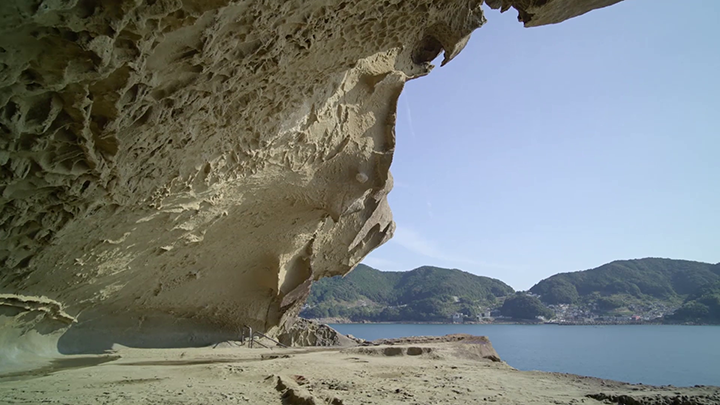
 Walking Tour
Walking Tour
Onigajyo
From Kumano-shi Station it's just a short walk to reach a stunning natural moment, the Onigajyo cliff walk, a 1.2km coastal path that hugs a spectacular rocky outcrop that juts out from the Shima peninsula. With the waves crashing below you, you can experience the thrill of traversing this path which winds its way through narrow openings in the cliff face while enjoying the view out to the vast ocean beyond. When you see the otherworldly shapes that have been carved into this landscape through millennia of erosion, it's not hard to see how this UNESCO designated site received its name, which means 'Demon Castle'.
-
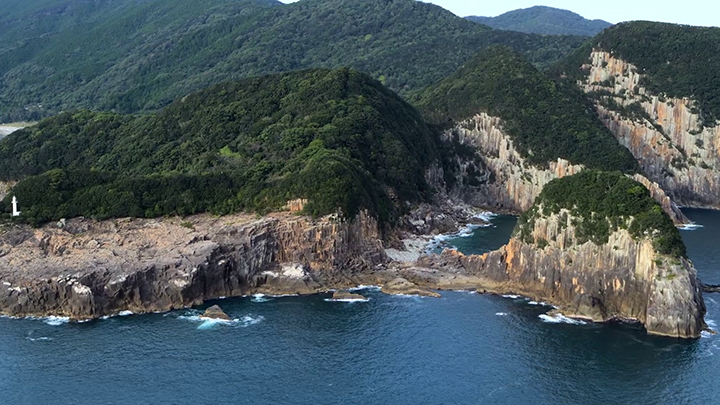
 Boat Cruise
Boat Cruise
Tategasaki Cruise
A leisurely round-trip boat cruise of just over an hour will see you dipping in and out of the promontories past Onigajyo and up to Tategasaki, an impressive towering outcrop of basalt pillars that juts out into the sea. Your cruise will also take you into the magical Kumano Blue Grotto, only accessible by boat, in which the shimmering crystal clear cyan water and gentle lapping of the waves against the cave walls creates an enchanting otherworldly atmosphere that you are sure to remember.
-
 40 minutes by bus
40 minutes by bus
-
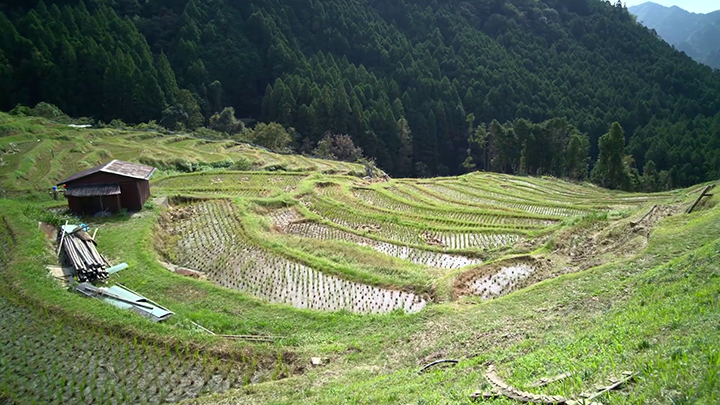
 Walking Tour
Walking Tour
Maruyama Terraced Rice Fields
Arriving at Maruyama Senmaida, you'll be greeted with the breathtaking view of over 1,000 terraced rice fields, rising in levels that climb the expansive mountainside of this deep valley, making use of every available spot of cultivatable land. Each season offers its own unique charms for enjoying this enchanting view; the shimmering water in the flooded paddies reflects the white clouds drifting across the azure sky in spring prior to planting, after which the scenery is transformed into a rippling landscape of deep green as the rice plants sway in the wind during the summer growing season. In winter the fresh white snow gleaming in the cold still air creates a sense of peace and the latent promise of future harvests. Taking in the beautiful view of this unique style of rice cultivation, you can feel the farming traditions that have sustained the lives of local people for generations.
-
 1.5 hours by bus and train
1.5 hours by bus and train
DAY 4
-
 10 minutes by train
10 minutes by train
-

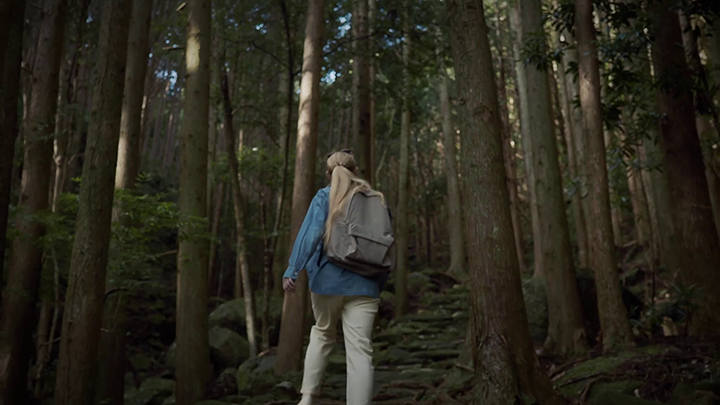
 Kumano Kodo Hiking
Kumano Kodo Hiking
Kumano Kodo IsejiMagose Pass
This morning's hike sees you travelling along a portion of the Iseji portion of the Kumano Kodo, a section of the network that became particularly famous from the 17th century onwards when pilgrimages to the Ise Shrines boomed in popularity. Many pilgrims would initially visit the Ise shrines and after paying their respects there, continue on to the three Grand Shrines of Kumano along the Iseji trail. Today you'll be traversing one of the most beautifully preserved sections of this trail, up and over the Magose Pass. The trailhead begins a short walk from Aiga Station, with cobblestone paths and ancient stone staircases well worn by the footsteps of countless pilgrims passing through towering forests of Japanese cypress trees. The trail ends back at the Owase Shrine, just a short walk from Owase Station from where you will continue your journey.
-
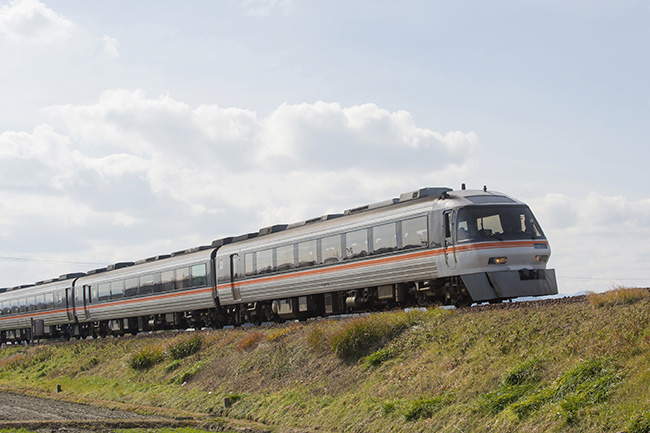
Limited express Nanki
 Owase Sta.▶▶Taki town Sta.
Owase Sta.▶▶Taki town Sta.
2.5hours by train and bus
-
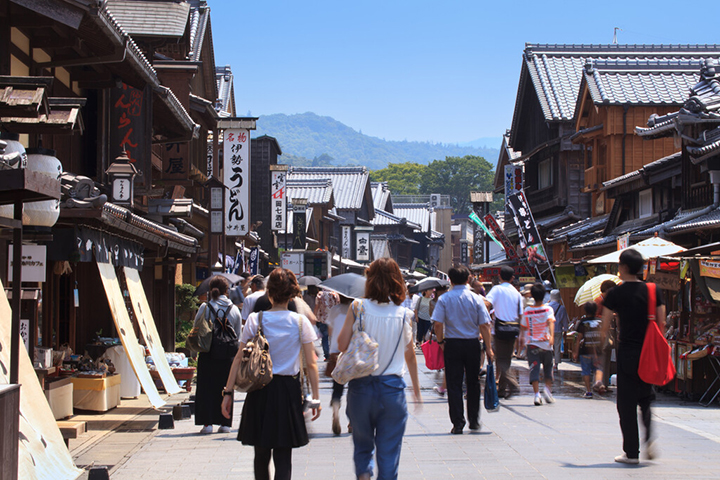
 Shopping and Food
Shopping and Food
Oharai-machi and Okage Yokocho
Major Shinto shrines and Buddhist temples in Japan always include a 'sando' - the main road used by worshippers during their final approach to the goal of their long journey. The Inner Shrine's sando at Ise, known as Oharai-machi, is a particularly fine example of the type of bustling districts that evolved in the areas immediately before the entrance to exalted spiritual centers. For centuries shops, tea houses and eateries have been catering to pilgrims weary from their long journeys, providing amusements and refreshments ahead of their visits to the shrine itself. One section of the Oharai-machi, called Okage Yokocho, has been recreated to emulate the atmosphere of the shrine approach during the 17th through 19th centuries, the period during which making a pilgrimage to Ise boomed as a popular activity. Here you can enjoy wandering the area while experiencing the same excitement that pilgrims have felt for centuries after arriving at the long anticipated gateway to the goal of their pious travels.
-
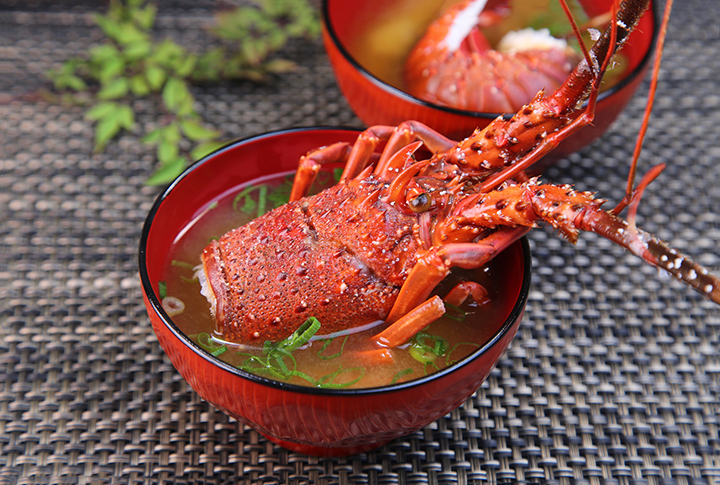
 Food
Food
Dinner: Japanese spiny lobster (Ise Ebi)
No visit to Ise would be complete without sampling the most renowned seafood dish that the area is famous for nationwide. Ise ebi, known in English as Japanese spiny lobster, makes for a luxurious dinner with which to celebrate your arrival. Caught locally in the bay of the Shima peninsula, the bright red shells of these large shellfish make for a visually stunning plate. A feast for the tastebuds as well as the eyes, the plump white meat has a wonderful sweetness and can be served in a variety of ways from thinly sliced raw sashimi, grilled, or steamed. Why not try an Ise Ebi course that allows you to sample this sublime ingredient cooked in many different ways all as part of one delectable feast?
DAY 5
-

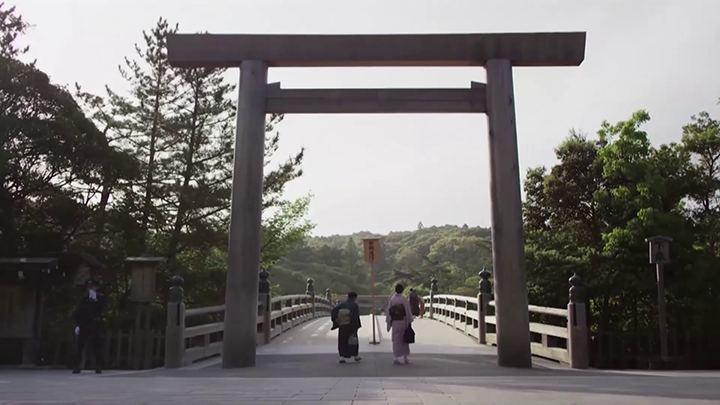
 Shrine
Shrine
Ise Jingu
Considered by most to be Japan's foremost center for Shinto worship, the Inner compound of Ise Jingu enshrines Amaterasu-Omikami, the great sun goddess, believed to be the mythical ancestress of the Japanese Imperial Family. The minimalist simplicity of the shrine creates a sublime sense of awe as visitors make their way along the wide boulevards leading to the main sanctuary. Unlike other Shinto shrines in Japan, where worshippers purify themselves before praying at specially constructed stone basins, as the Ise Inner Shrine devotees also have the chance to purify their hands by washing them at an area by the sacred Isuzugawa River which runs past the Uji Bridge at the entrance to the complex. A unique feature of the Ise Shrine's inner sanctuary is that the buildings are completely reconstructed every 20 years in an area directly adjacent to the previous buildings. The sense of mystery that you feel when visiting Ise Jingu is compounded by the fact that it's not possible to enter the inner sanctuary itself; visitors perform their supplications from a fenced area at the entrance to the inner sanctuary, with the shrine buildings themselves only just visible above the surrounding walls and trees. Ise Jingu is a great lesson in how showing just a tantalizing glimpse of something can create a more powerful impression than a full-on view!
-
 1 hour by bus and train
1 hour by bus and train
-
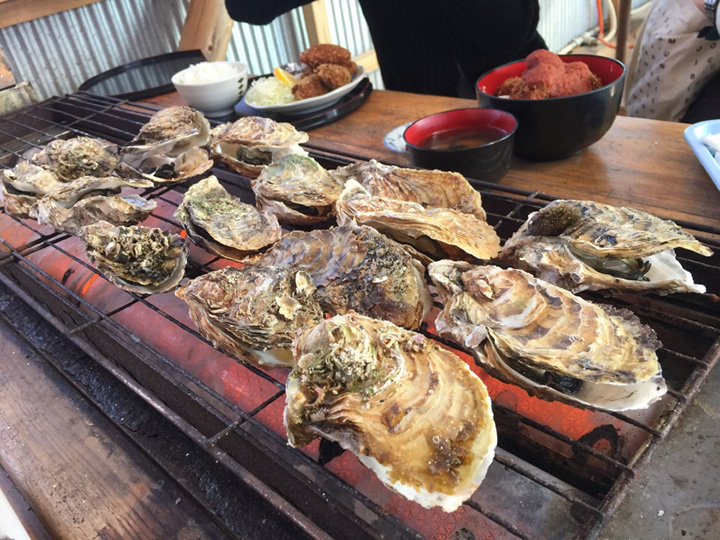
 Food
Food
Lunch
Arriving on the coast, the bracing ocean breeze is sure to whet your appetite for a lunch that highlights the fresh seafood for which this region is so famed. There are a variety of restaurants in the vicinity of Toba Station specializing in various delicacies such as Kaisendon - a type of rice bowl dish topped with morsels of fresh sashimi, fresh sushi, grilled fish, and of course oysters!
-
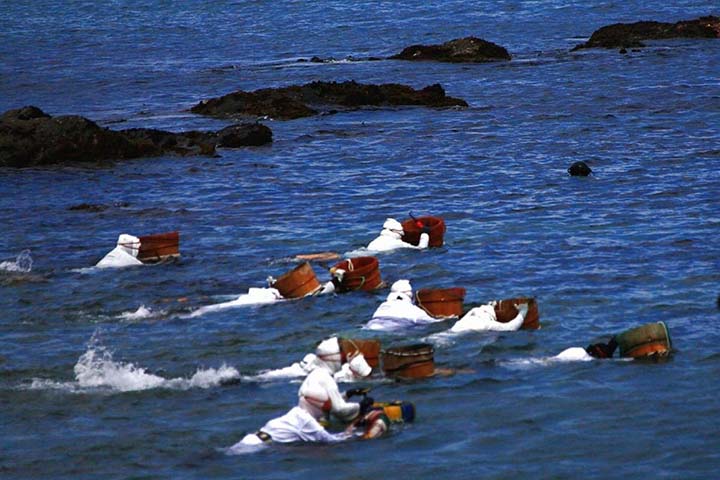
 Activity
Activity
Demonstration of Ama Divers (women shell divers)
Toba is home to the Mikimoto Pearl Island, where a new technique for the farming of oysters and the commercial cultivation of pearls was first developed during the late 19th century by the Mikimoto company founder Kokichi Mikimoto. Here you have the chance to watch the female Ama divers demonstrate the traditional way that pearls were harvested before the introduction of modern technologies. Diving without oxygen tanks in their unique all-white garb, make sure to listen out to the unique whistling sound made by the divers as part of the special breathing techniques they use that have been honed and passed down over generations. This sound has even been designated as one of the '100 Soundscapes of Japan' by the Ministry of the Environment.
-
 2 hours by train
2 hours by train
-

 Hotel
Hotel
Overnight at Nagoya Marriott Associa Hotel
After 5 days of hiking and exploring, what better way to round out your trip than to stay the night at the Marriott Associa Hotel, a luxury property directly connected to Nagoya Station. Arriving in the late afternoon, on checking in you can toast your success with a refreshing expertly crafted cocktail at the hotel's Estmare bar before enjoying a hearty and well-deserved feast for dinner at one of the hotel's six in-house restaurants; restaurant choices include French cuisine, Chinese dim sum, Japanese teppanyaki cooked right before your eyes, or buffet-style dining if you're feeling a calorie deficit after your hiking efforts! One thing's for sure, after soaking up the panoramic view of the bright lights of Nagoya from your room, you're sure to sleep well tonight. Have a lie in - you've earned it!
DAY 6
-

 Shinkansen
Shinkansen
Tokaido ShinkansenNagoya Sta. ~ Tokyo Sta.
From your hotel directly connected to Nagoya station, it's easy to hop on to the Tokaido Shinkansen for your journey back to Tokyo. Keep an eye out of the window as you whizz through Shizuoka prefecture - on clear days Mt Fuji is visible in all its glory along this route!
Spending some time away from Japan's big cities, on completing your journey along ancient pilgrimage trails, you're sure to feel that you've experienced the true spirit of Japan. Although you'll no doubt have worked up a sweat on your hikes along the way, the fresh mountain air, invigorating sea breeze, delicious local foods and the spiritual energy of shrines reverberating with centuries of tradition are sure to leave you feeling refreshed and fulfilled.
Useful Tickets
The train options that suit you the best and experience your own voyage to Kii-Peninsula

